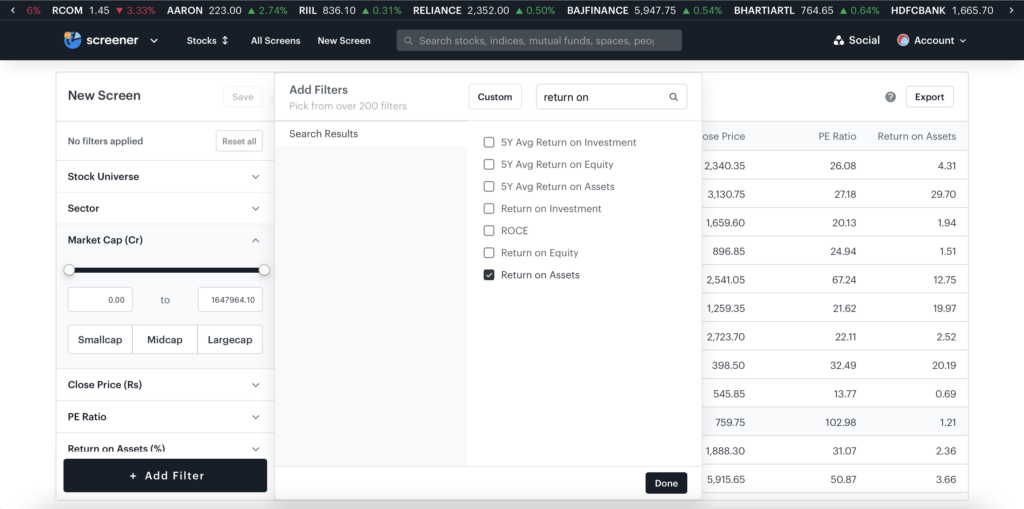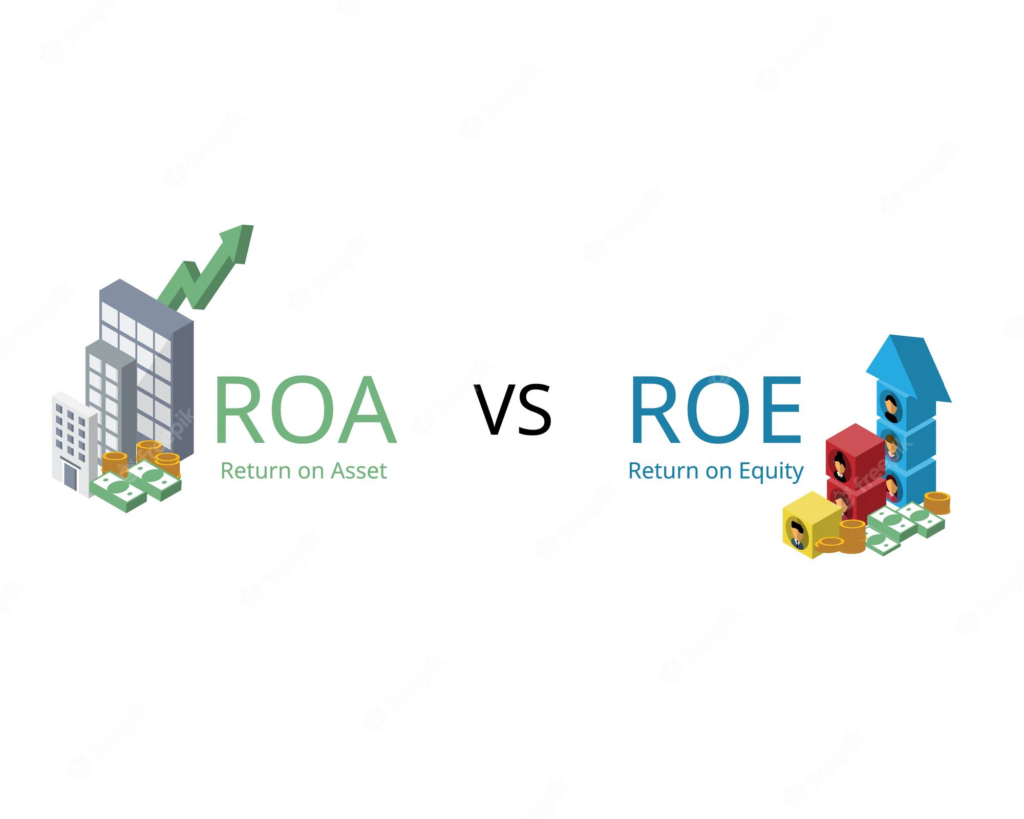Return on Assets (ROA) is a financial ratio that measures a company’s profitability against its total assets. It is used by corporate management, analysts, and investors to assess how effectively a company uses its resources and assets to generate profit.
Read further to learn the return on assets meaning, how to calculate it, and its importance.
You will Learn About:
What is the return on assets?

Return on assets, also called return on total assets, is a measure that evaluates the profitability of an organisation by comparing its net earnings to the average total assets. In other words, a company’s ability to effectively manage its assets and generate long-term profits is measured by the return on assets ratio.
Considering capital assets are often significant investments for most businesses, ROA can be an accurate measure of a company’s performance and future growth.
Return on Assets – Main Highlights!
- The return on assets ratio measures a company’s profitability against its total assets.
- To calculate ROA, you can divide the net income by the total assets of a company.
- ROA and ROE (Return on Equity) are not the same. ROA depicts the profitability of a business against its assets, whereas ROE is a measure of profitability against shareholders’ equity.
- Asset-intensive industries like Oil and Gas, airlines, real estate etc., typically have less ROA, whereas industries like financial services, software etc., have high ROA.
- A ratio above 10-15% can be considered an ideal ROA.
How to calculate return on assets (ROA)?
The return on assets formula is:
ROA = Net income / Average total assets
Where,
- Net Income = Net earnings in that financial year
- Average total assets= Ending assets – beginning assets / 2
There is another formula where the net profit margin is multiplied by the asset turnover rate to get ROA. Let’s understand this with an example.
Example of return on assets (ROA)
Let’s assume that a company’s net income is Rs. 15 cr., its total revenue is Rs. 150 cr., and its asset turnover is Rs. 90 cr.
To calculate the return on assets, we start by calculating the company’s net profit margin by dividing its net income by its total revenue:
Net profit margin = 15 / 150 = 0.1 (10%)
Next, we divide the company’s total revenue by its average total assets to determine the asset turnover rate.
Asset turnover rate = 150 / 90 = 1.667
Lastly, we multiply the company’s asset turnover by the net profit margin to find the ROA.
ROA = 0.1 x 1.667 x 100 = 16.7%
Alternatively, use Tickertape Stock Screener to find the ROA of a company. There are over 200+ filters that can help you in finding the best stocks based on various parameters like market cap, 1-yr returns, net profit, etc.

What is a good return on assets ratio?
Generally, a ROA of over 5% is considered good, and one of over 20% is considered exceptional.
However, ROA should always be compared with companies in the same industry. For instance, comparing the ROA of a software company with that of an automobile company will not yield any results because the automobile firm will have significantly more assets than the software company.
Return on assets interpretation
Investors find a high ROA ratio more appealing since it shows that the company is more adept at managing its assets.
ROA can be an important measure when comparing companies in the same industry. A good ROA ratio typically indicates an upward profit trend, whereas a declining ROA may suggest a business has not rightfully leveraged its assets. A low ROA could mean decreased sales or revenue, which can directly hamper profitability.
Additionally, ROA also helps determine how asset-intensive a corporation is. Companies in Oil and Gas, chemicals etc., are typically asset-intensive and have low ROA. On the other hand, industries like software etc., are not asset-intensive and have high ROA.
What return on assets (ROA) means to investors?
ROA can be employed to compare companies within the same industry or sector. Investors can utilise the ROA ratio to identify promising stock opportunities and study the relationship between income and assets to predict future growth and revenue.
A rising ROA over time shows the business is performing well and growing. In comparison, a declining ROA may suggest that the corporation is underutilising its assets to generate income.
What are the limitations of ROA?
Although calculating ROA is useful in various ways, it is not the only technique to assess a company’s effectiveness and financial stability.
Numerous other elements, like market conditions, consumer demand, etc., can affect a company’s performance and net income. Therefore, the return on assets ratio should be studied along with other metrics, such as ROE, to obtain a complete picture of a company’s financial health.
ROA vs ROE

Of the many tools and ratios, there are two primary metrics managers and investors look at to gauge a company’s profitability – ROA and ROE. Both take profitability into account but are different concepts.
ROA is a measure that depicts a company’s profitability compared to its total assets. It demonstrates how effectively (or ineffectively) a business uses all its resources, including machinery, transport, and intellectual property, to generate revenue. ROE, on the other hand, measures profitability against shareholders’ equity. It assesses the returns a company produces against employed shareholders’ funds.
ROE is calculated by dividing a company’s net earnings by its shareholder’s equity, while ROA is calculated by dividing the net income by total average assets.
The large difference between these two ratios is that in the case of ROE, profit is measured against shareholders’ funds, whereas, for ROA, profit is measured against the total average asset.
Use Tickertape Stock Screener to analyse a stock using the profitability ratios like ROA, ROE, etc.
Conclusion
The ROA shows how effectively a business uses its assets to generate profits. Investors can use it to identify potential investment opportunities. An increasing ROA shows that the company profits from each rupee invested in its assets. On the other hand, a declining ROA means that the corporation has invested in assets that aren’t yielding enough revenue. Understand ROA and then invest in companies.



